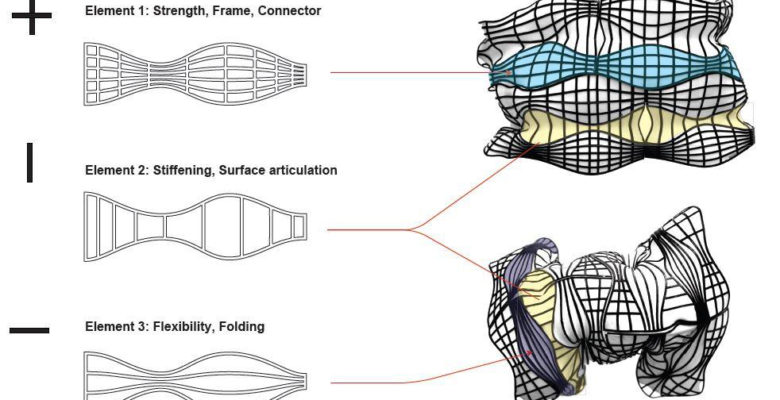This article questions the direct connections between geometry and material behavior of plywood and latex composite, and its structural performance relevance employing an architectural solution. Biology makes use of only remarkably few materials; thus, this investigation works with simple morphological fibers differentiation, density and
arrangement to create form with performance, just as successfully observed in nature. The CNC milled plywood patterns are applied to the pre-stretched latex sheet form, which results in curvature upon tension release. This method uses the logic built inside the material, based on its embedded properties and behavior. The manifested form, which appears as a result of the interaction between materials, its internal rules (2D patterns) and external (forces). This morphogenetic process of differentiation and arrangement of fibers is displayed by digital simulations that try to predict the behavior of composites. Finally, we made comparisons between both sets of experiments, digital and physical, which support the aim of designing with less component-based systems and encourage the development of interactive homogeneous materials.
This article originally appeared in Vol 11.02 of the Perkins&Will Research Journal. CLICK HERE to see the whole article.

